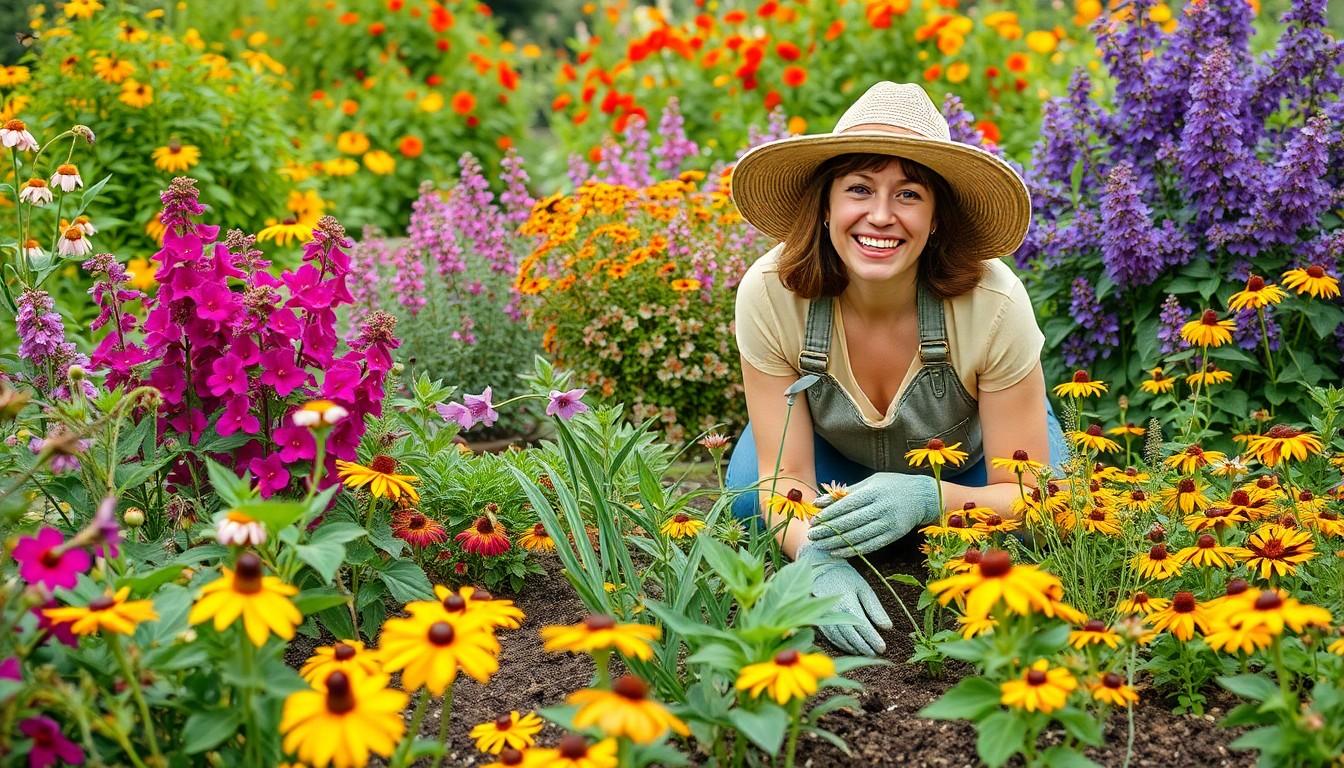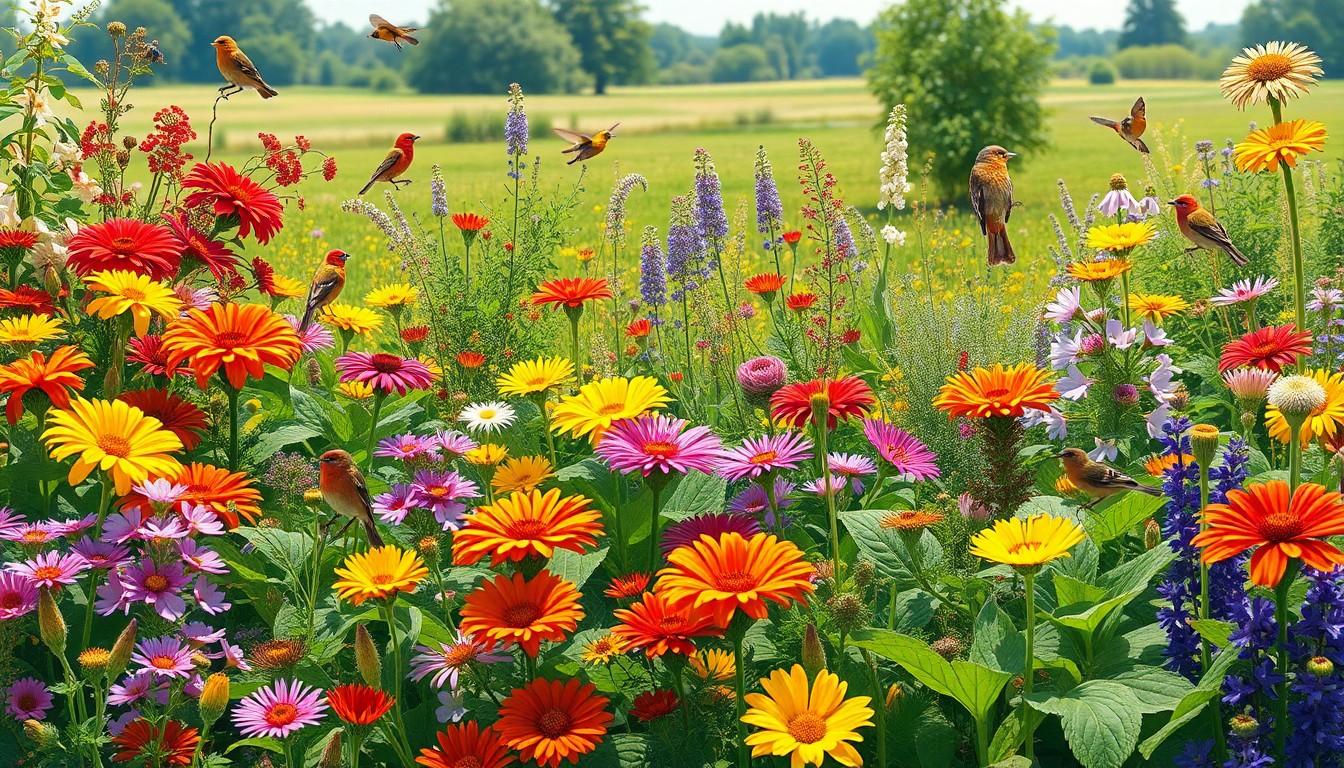Phone:
(701)814-6992
Physical address:
6296 Donnelly Plaza
Ratkeville, Bahamas.

When it comes to gardening, why settle for ordinary when you can embrace the extraordinary? Native Indiana plants are nature’s way of saying, “I’ve got your back!” These resilient green wonders not only thrive in the Hoosier state’s unique climate but also offer a buffet for local wildlife. Imagine a garden that’s not just pretty but also a bustling ecosystem—now that’s a party worth attending!
Native Indiana plants thrive in the local climate, adapting to varying weather conditions and soil types. These plants play a crucial role in supporting local ecosystems by providing food and habitat for wildlife, including birds, insects, and small mammals. Many native species require less water and fewer fertilizers, making them an eco-friendly choice for gardening.
Common native plants include the Eastern Redbud, with its striking pink flowers, and the Black-Eyed Susan, known for its vibrant yellow petals. These plants not only enhance garden aesthetics but also contribute to biodiversity by attracting pollinators. Additionally, native grasses like Big Bluestem and Little Bluestem form essential parts of Indiana’s natural landscapes.
Incorporating native plants into gardens promotes soil health while reducing the risk of invasive species. The use of native flora supports natural pest management strategies, allowing gardeners to minimize chemical interventions. Organizations like the Indiana Native Plant Society encourage the cultivation of these plants through educational programs and resources.
Planting native species creates resilient, low-maintenance gardens that adapt to changing conditions. Resilient ecosystems flourish when native plants are the focus, fostering environments where local wildlife can thrive. Familiarizing oneself with native Indiana plants provides a deeper appreciation for the region’s natural heritage and cultivates stewardship for these critical ecosystems.

Planting native Indiana plants offers significant advantages for both the environment and economy. Highlighting these benefits underscores their role in promoting a sustainable future.
Ecological advantages abound with the incorporation of native plants. They provide essential food sources and habitats for local wildlife, promoting biodiversity in ecosystems. Local birds, insects, and small mammals thrive when native flora is present. Native plants also foster healthy soil structures, enabling better water retention and reducing erosion. Lower water requirements ease the burden on local water resources. Additionally, these species resist pests and diseases better than non-natives, minimizing the need for pesticides. Their deep-root systems contribute to excellent stormwater management, reducing runoff and enhancing water quality. Supporting local flora helps create resilient ecosystems that adapt to climate changes.
Economic incentives strongly favor using native plants in landscaping and gardening. Lower maintenance costs come from reduced watering and fertilizer needs. Eco-friendly gardens lead to decreased spending on chemical treatments. Many native plants flourish in Indiana’s climate, further minimizing resource consumption. Homeowners find they can enjoy vibrant landscapes that require less time and money to maintain. Gardeners often experience increased property values, thanks to well-designed native plant gardens. In addition, organizations like the Indiana Native Plant Society provide resources and support, encouraging local businesses to thrive. Investing in native ecosystems fosters a sustainable economy while enhancing community aesthetics.
Native Indiana plants offer a range of options that enhance gardens while supporting local ecosystems. Choosing the right species can create vibrant, resilient landscapes.
Eastern Redbud stands out as a popular choice. Its stunning pink flowers bloom in early spring, attracting pollinators. Sugar Maple provides brilliant fall foliage and shade. Other notable trees include Black Cherry, known for its edible fruits, and Sweetgum, with its unique star-shaped leaves. Native shrubs like Serviceberry produce delicious berries favored by birds. Spicebush features fragrant leaves and contributes to habitat diversity. Each of these species not only beautifies spaces but also supports local wildlife, improving garden ecology.
Black-Eyed Susan brightens landscapes with its golden-yellow blooms, appealing to various pollinators. Purple Coneflower adds a splash of color and attracts butterflies throughout the growing season. Another favorite, Wild Bergamot, offers fragrant flowers that draw bees and hummingbirds. Grasses such as Little Bluestem and Switchgrass provide essential ground cover, enhancing soil health and preventing erosion. Each species contributes to biodiversity, promoting a self-sustaining ecosystem that thrives in Indiana’s climate.
Cultivating native Indiana plants requires careful consideration of soil, planting techniques, and ongoing maintenance. This approach supports the unique ecosystem and ensures healthy plant growth.
Proper soil preparation lays the foundation for successful planting. Test soil pH before planting to determine necessary amendments. Native plants thrive in well-drained soil enriched with organic matter. Adding compost enhances nutrient levels and supports healthy roots. Tilling the soil improves aeration, promoting better water absorption and root development. Consider removing any invasive plants before tilling to reduce competition for resources.
Effective planting techniques ensure native plants establish quickly. Choose a planting date in spring or early fall when temperatures are moderate. Dig holes that are twice the width of the root ball for better expansion. Place plants at the same depth they were in their nursery containers, avoiding deep planting that can cause root rot. Water thoroughly after planting to settle the soil around roots and eliminate air pockets. Lastly, space plants appropriately to allow for growth and airflow.
Regular maintenance practices support the health of native plants. Monitor moisture levels, especially during dry spells, to prevent stress on young plants. Mulching around plants conserves moisture and suppresses weeds. Fertilization is usually unnecessary, but a yearly application of organic mulch can promote soil health. Pruning may enhance growth and flower production in certain species. Seasonal inspections for pests and diseases help maintain plant vigor and ensure a thriving landscape.
Conservation of native Indiana plant species requires active participation from communities and individuals. Engaging in local restoration projects, such as replanting native species in parks and natural areas, strengthens biodiversity. Participating in workshops and educational programs fosters better understanding of native flora, promoting appreciation among residents.
Supporting organizations like the Indiana Native Plant Society enhances conservation efforts. These groups provide resources and expertise, guiding individuals in selecting and cultivating native plants for their gardens. Additionally, spreading awareness about the ecological benefits of native species encourages responsible gardening practices.
Adopting sustainable gardening techniques proves beneficial for conservation. Techniques include minimizing pesticide use, which protects native pollinators, and practicing water conservation through efficient irrigation methods. Fostering plant diversity in landscaping supports wildlife habitats essential for ecological balance.
Documenting local native plants and their habitats contributes to ongoing conservation initiatives. Citizen science projects allow individuals to track plant populations, monitor changes in ecosystems, and report observations to relevant authorities. This data helps inform policymakers about the importance of preserving native habitats.
Utilizing native plant nurseries promotes the use of locally sourced species. These centers often offer a variety of native plants suited for diverse landscapes. Prioritizing the selection of native plants over non-native imports strengthens resilience against pests and diseases, supporting healthier ecosystems.
Advocating for policies that protect natural habitats secures a better future for native plants. Local governments and environmental organizations can collaborate to establish protected areas, creating sanctuaries for indigenous flora and fauna. By focusing on education, advocacy, and sustainable practices, communities can effectively conserve Indiana’s rich plant heritage.
Embracing native Indiana plants not only enhances the beauty of gardens but also nurtures the local ecosystem. These resilient species are perfectly suited to the state’s climate and soil, offering a sustainable option for gardeners. By supporting local wildlife and promoting biodiversity, native plants create vibrant landscapes that require less maintenance.
As communities engage in conservation efforts and sustainable gardening practices, they contribute to the preservation of Indiana’s natural heritage. The collaboration between individuals, local organizations, and native plant nurseries fosters a deeper appreciation for the environment. Ultimately, choosing native plants is a step toward a healthier, more sustainable future for Indiana’s ecosystems.